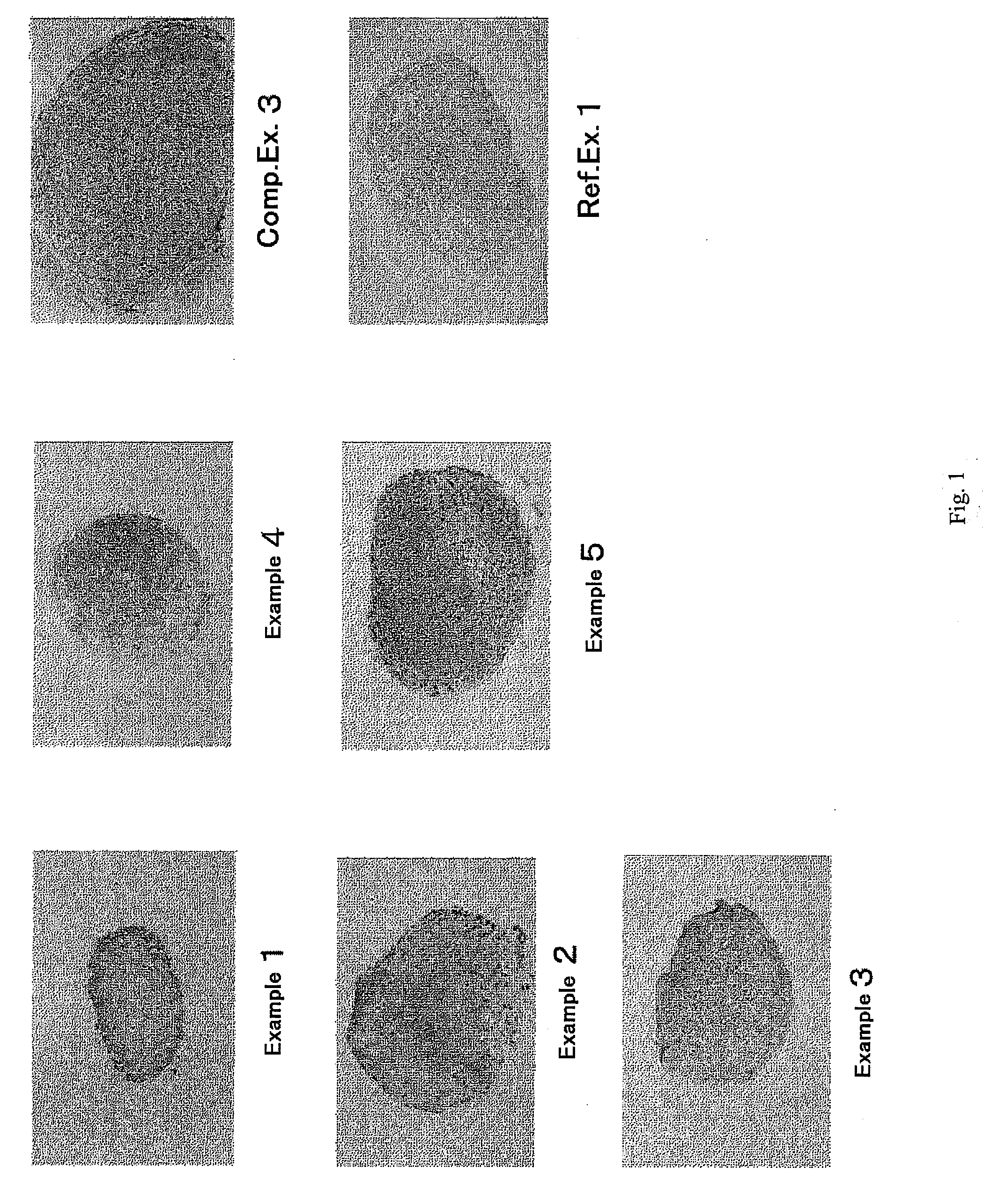Stem cell separating material and method of separation
a technology for stem cells and material, applied in the field of stem cell material and filter, can solve the problems of inability to use for actual medical purposes, high rate of recovery of adherent stem cells, and poor method, and achieve the effects of simple and easy, simple and easy, and hardly causative of adverse reactions
- Summary
- Abstract
- Description
- Claims
- Application Information
AI Technical Summary
Benefits of technology
Problems solved by technology
Method used
Image
Examples
example 1
Separation of Adherent Stem Cells from Bone Marrow Fluid Using a Filter for Separating Stem Cell
(1) Cell Source
[0167]A domestic pig weighing about 30 kg was anesthetized by intramuscular injection of Ketalar and Selactar, followed by additional intravenous injection of Nembutal. Bone marrow fluid was collected from the iliac bone into a 10-ml syringe containing heparin added in advance in an amount to make about 20 IU / ml using a 15 G puncture needle. Then, heparin was added to the bone marrow pool thus collected to a final concentration of 50 IU / ml, followed by thorough mixed up by repeated reversal.
(2) Preparation of a Filter for Separating Stem Cell
[0168]A filter for separating stem cell was prepared by putting together twelve piled-up split fiber nonwoven fabrics made of polyester and polypropylene [density K (basis weight (g / m2) / thickness (m)=1.3×105 (73 / (5.5×10−4)), fiber diameter=8±5 μm (i.e. mean value=8 μm; hereinafter the same shall apply), mesh opening=5 to 50 μm (minor ax...
example 2
[0173]Following the procedure of Example 1 in the same manner except that the filter for separating stem cell used contained nonwoven fabrics made of rayon and polyolefin [density K (basis weight (g / m2) / thickness (m)=2.0×105 (110 / (5.5×10−4)), fiber diameter=15±9 μm, mesh opening=5 to 48 μm) as the material for separating stem cell, the percent cell passages, the recovery rates and the number of colonies that had appeared were determined, a metachromasy observation was made and the Calcein fluorescence intensity was measured. As a result, the percent passages of erythrocytes and platelets were each about 95% and the percent passage of leukocytes was about 78%. The recovery rates were 0.3% for erythrocytes and about 4% for platelets, indicating that most of erythrocytes and platelets can be removed by the filter for separating stem cell used. The leukocyte recovery rate was about 16%, indicating that 80% or more of leukocytes can be removed. The number of colonies that had appeared wa...
example 3
[0174]Following the procedure of Example 1 in the same manner except that the filter for separating stem cell used contained nonwoven fabrics made of polyester [density K (basis weight (g / m2) / thickness (m)=5.0×105 (250 / (5.5×10−4)), fiber diameter=18±11 μm, mesh opening=8 to 43 μm) as the material for separating stem cell, the percent cell passages, the recovery rates and the number of colonies that had appeared were determined, a metachromasy observation was made and the Calcein fluorescence intensity was measured. As a result, the percent passages were about 93% for erythrocytes, about 79% for platelets and about 81% for leukocytes. The recovery rates were 0.4% for erythrocytes and about 8% for platelets, indicating that most of erythrocytes and platelets can be removed by the filter for separating stem cell used. The leukocyte recovery rate was about 8%, indicating that 90% or more of leukocytes can be removed. The number of colonies that had appeared was 33 / dish. It was observed ...
PUM
| Property | Measurement | Unit |
|---|---|---|
| diameter | aaaaa | aaaaa |
| specific gravity | aaaaa | aaaaa |
| diameter | aaaaa | aaaaa |
Abstract
Description
Claims
Application Information
 Login to View More
Login to View More - R&D
- Intellectual Property
- Life Sciences
- Materials
- Tech Scout
- Unparalleled Data Quality
- Higher Quality Content
- 60% Fewer Hallucinations
Browse by: Latest US Patents, China's latest patents, Technical Efficacy Thesaurus, Application Domain, Technology Topic, Popular Technical Reports.
© 2025 PatSnap. All rights reserved.Legal|Privacy policy|Modern Slavery Act Transparency Statement|Sitemap|About US| Contact US: help@patsnap.com



